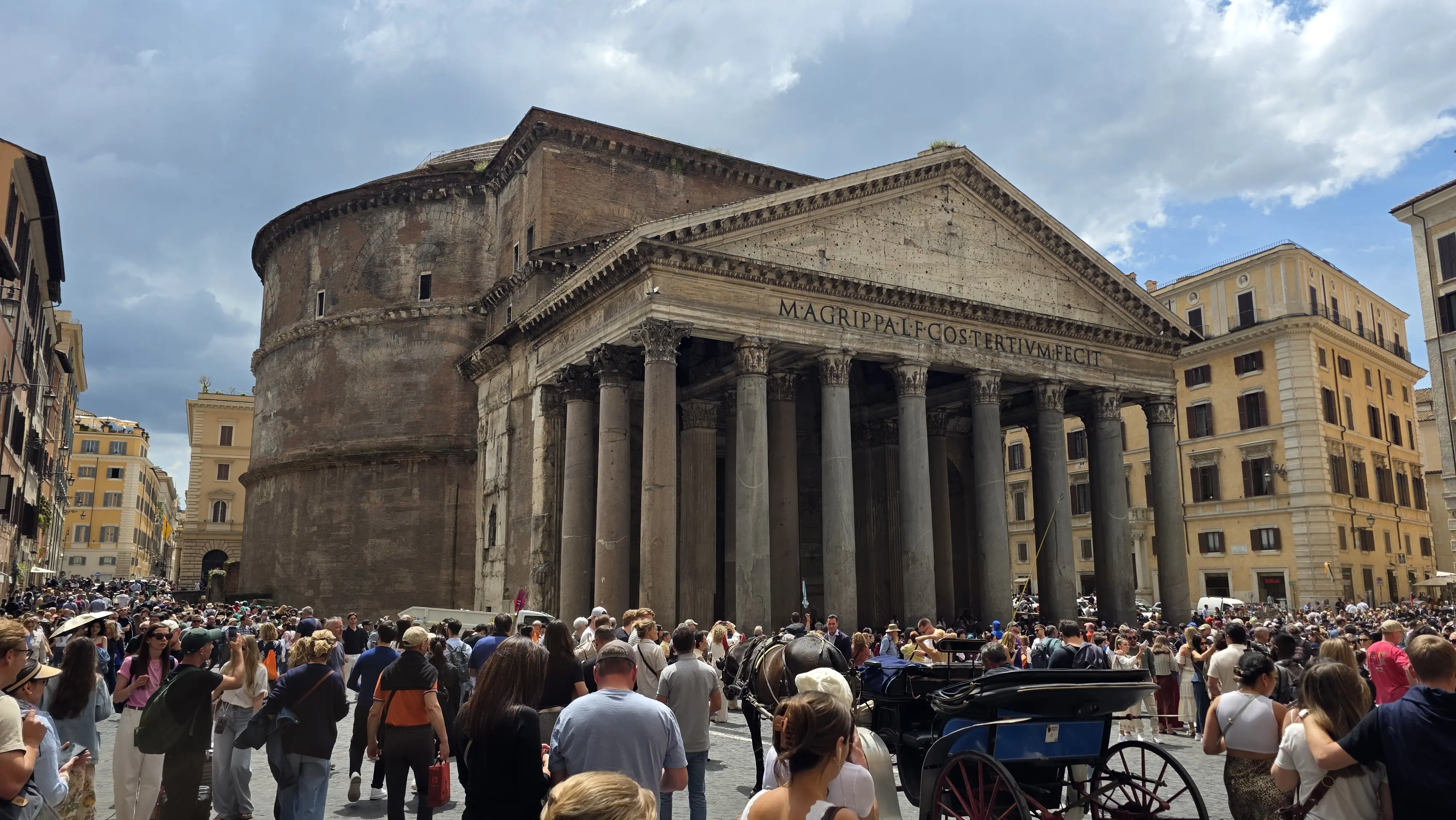Ciao dear readers 💖 There are places in the world that make you pause. Not just because of what they are, but because of what they make you feel. The Pantheon in Rome is one of those places. I had visited before, but this time was different. Maybe it was the way the sunlight filtered through the oculus, or the quiet awe in the air, or simply the weight of history that seems to wrap itself around you the moment you step inside. Whatever it was, the Pantheon reminded me, yet again, that some places don’t need to shout to be extraordinary.
⏳ A Monument Through Time
The Pantheon we see today was built around 126 AD by Emperor Hadrian, though it stands on the site of two earlier temples commissioned by Marcus Agrippa in 27 BC. While Hadrian’s architects completely redesigned the structure, they retained Agrippa’s original inscription on the portico: M·AGRIPPA·L·F·COS·TERTIVM·FECIT – “Marcus Agrippa, son of Lucius, consul for the third time, built this.”
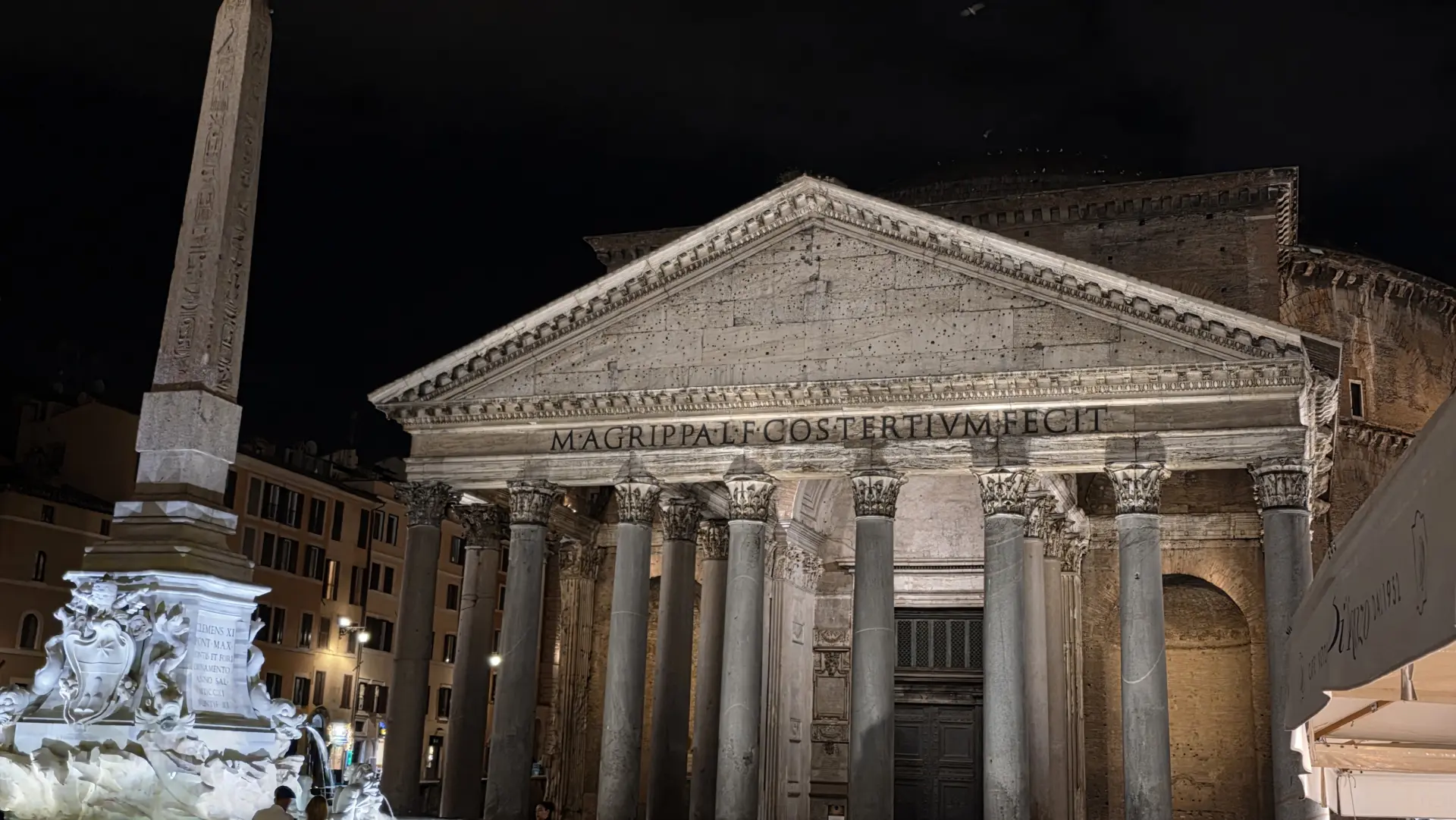
Originally constructed as a temple to all Roman gods, the Pantheon’s name derives from the Greek pan (all) and theos (gods). In 609 AD, it was consecrated as a Christian church, Santa Maria ad Martyres (or Basilica of St. Mary and the Martyrs), by Pope Boniface IV. This conversion was pivotal: it preserved the building during centuries when other pagan temples were destroyed or dismantled.
Its influence cannot be overstated. The Pantheon inspired Brunelleschi, Michelangelo, and countless architects through the Renaissance and beyond. Its echoes are visible in St. Peter’s Basilica, the Pantheon in Paris, and even Washington D.C.’s Capitol dome.
🌌 The Dome That Defies Time
At 43.3 meters in diameter, the Pantheon’s dome is the largest unreinforced concrete dome in the world, an engineering marvel still unmatched. Perfectly symmetrical, the dome rests atop a drum of equal diameter, forming a space of harmony and visual perfection.
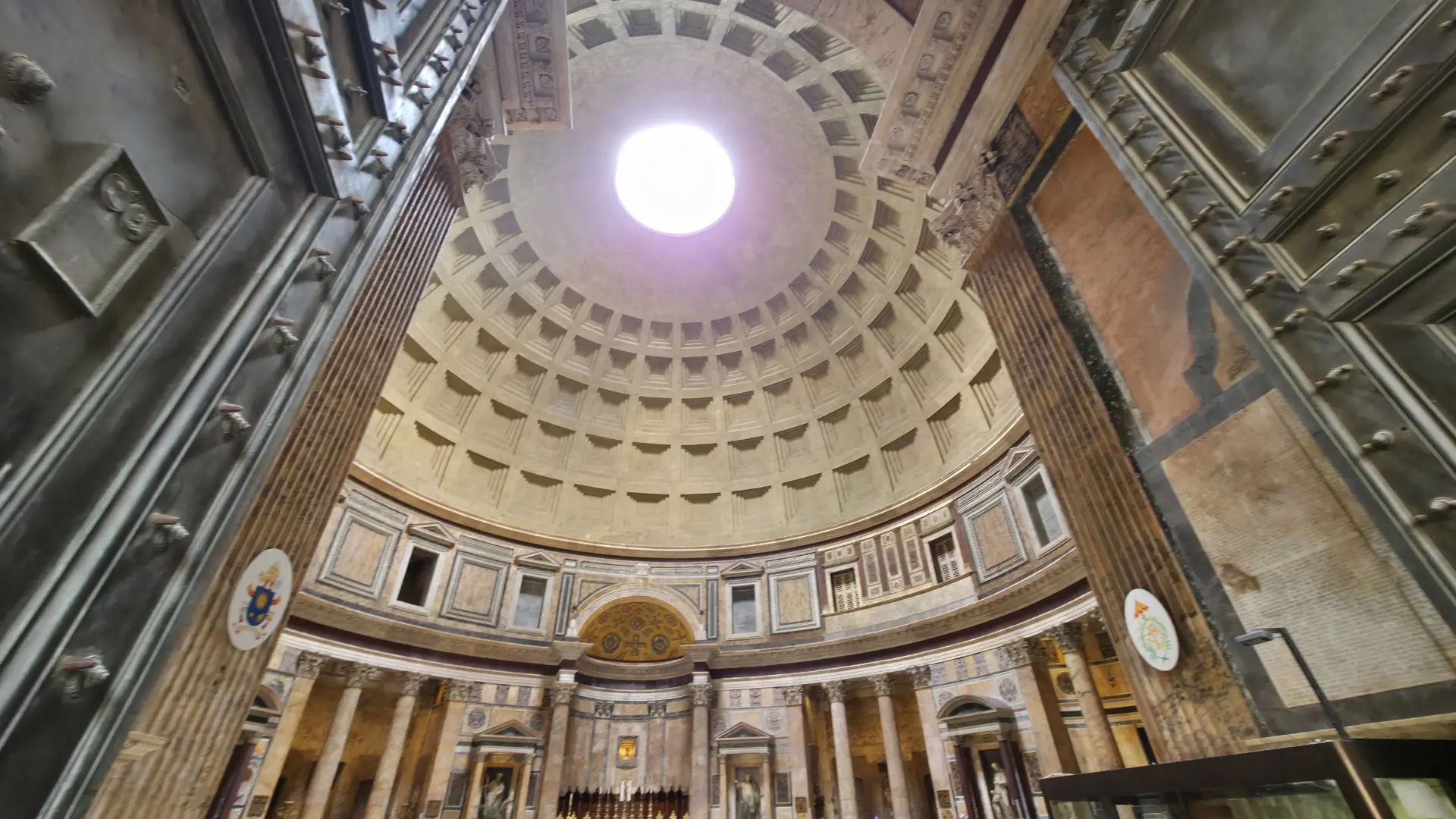
The interior is carved with coffers, sunken rectangular panels, that lighten the weight and create a hypnotic rhythm leading the eye upward. At the center, the oculus, a 9-meter-wide circular opening, floods the space with natural light and serves as a symbolic connection to the heavens.
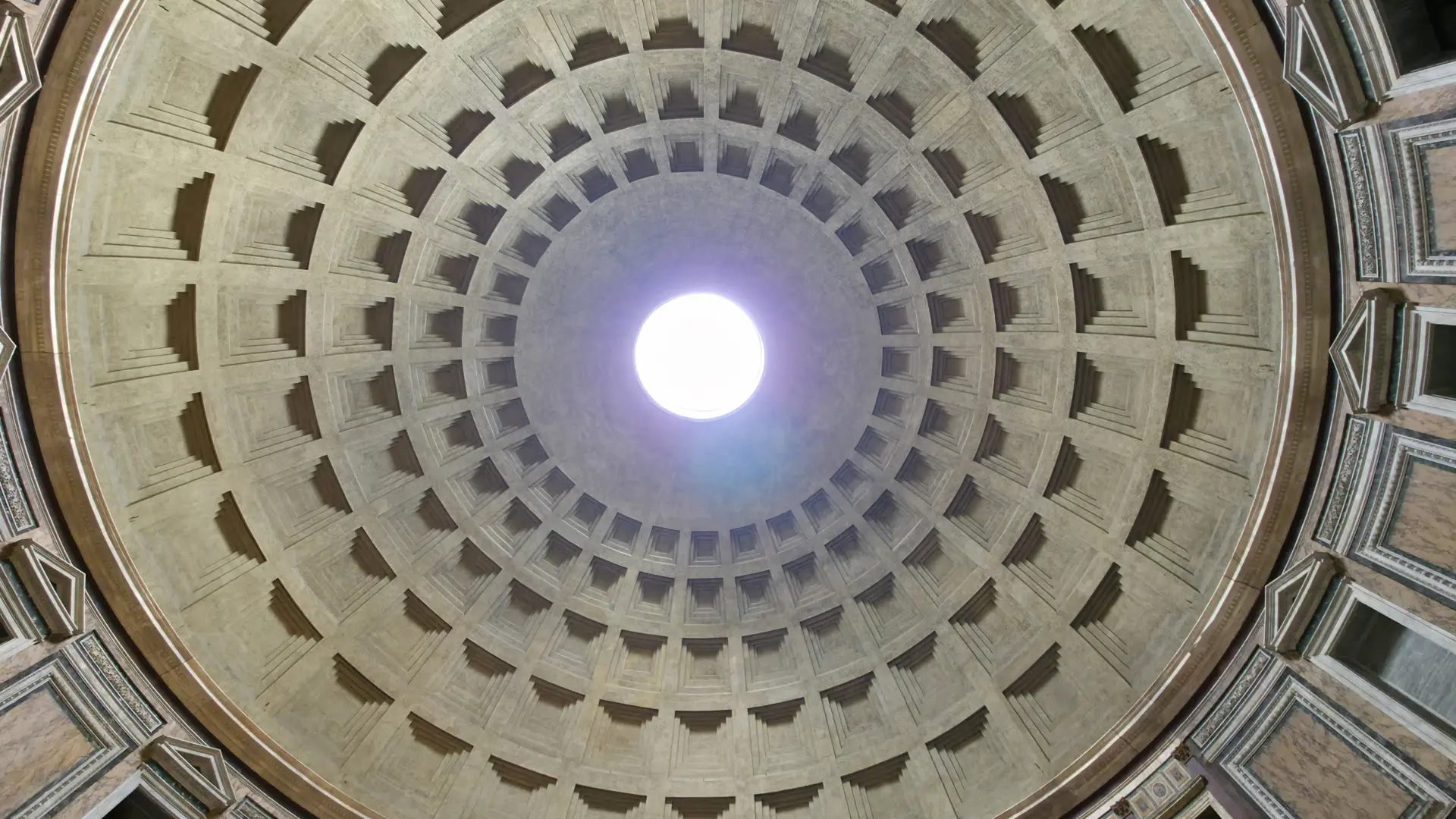
On Pentecost, rose petals are dropped from the oculus during Mass, a tradition that transforms the dome into a celestial bloom. And yes, rain falls through the oculus too, but quietly drains away through small, nearly invisible holes in the sloped marble floor, just another sign of Roman brilliance.
⚰️ A Resting Place for Legends
The Pantheon is also a place of memory and tribute. It holds the tombs of some of Italy’s most revered figures:
Raphael, the High Renaissance master, is buried here beneath a sculpture of the Madonna created by his student Lorenzetto. His Latin epitaph reads: “Here lies Raphael, by whom Nature feared to be outdone while he lived, and when he died, feared she too would die.” His fiancée, Maria Bibbiena, is buried nearby.
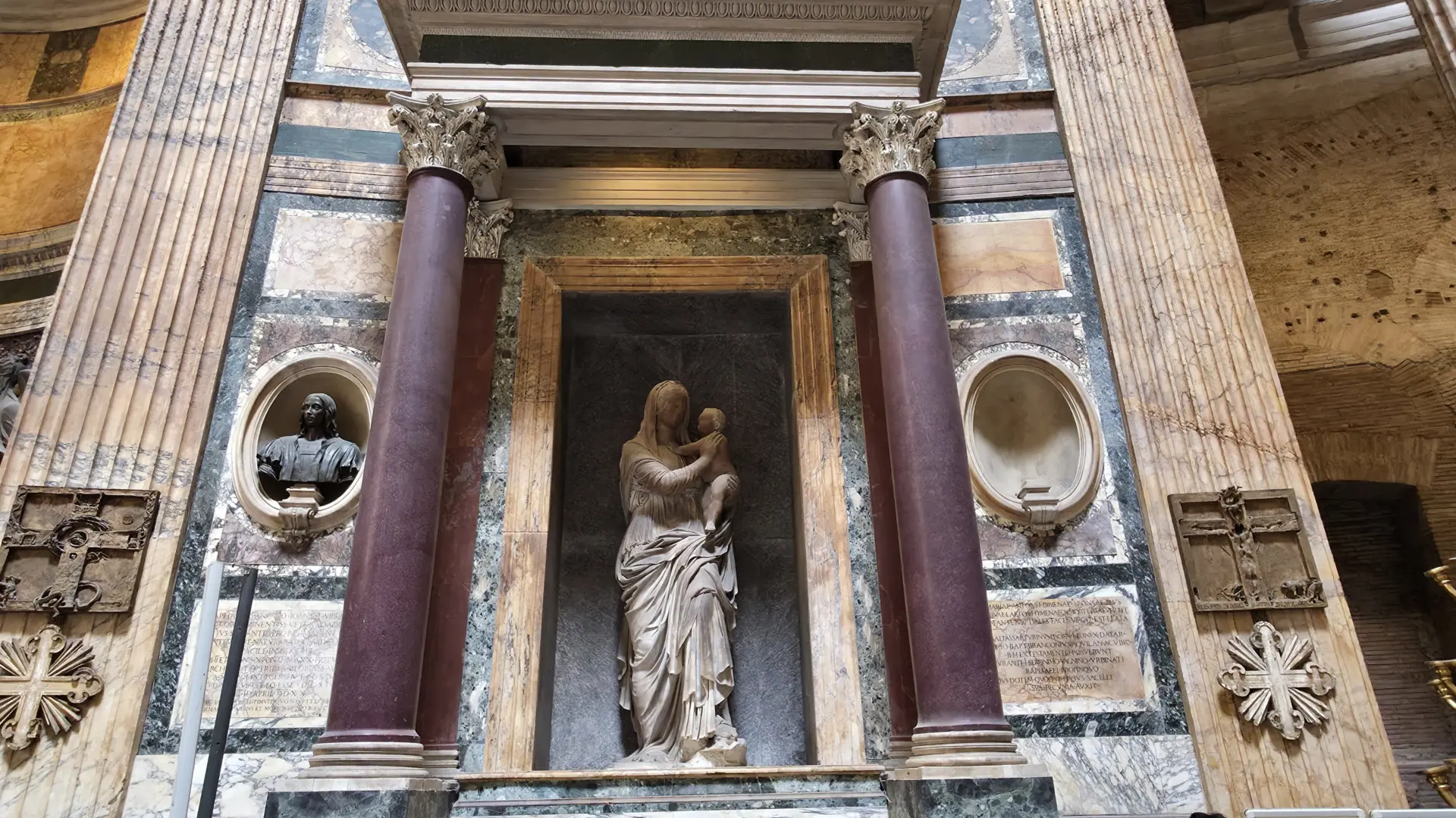
Victor Emmanuel II, known as the ‘Father of the Fatherland,’ unified Italy in 1861 and became its first king. His white marble tomb rests prominently within the Pantheon and is often adorned with flowers or wreaths, a site of national pride visited by patriots and pilgrims alike.
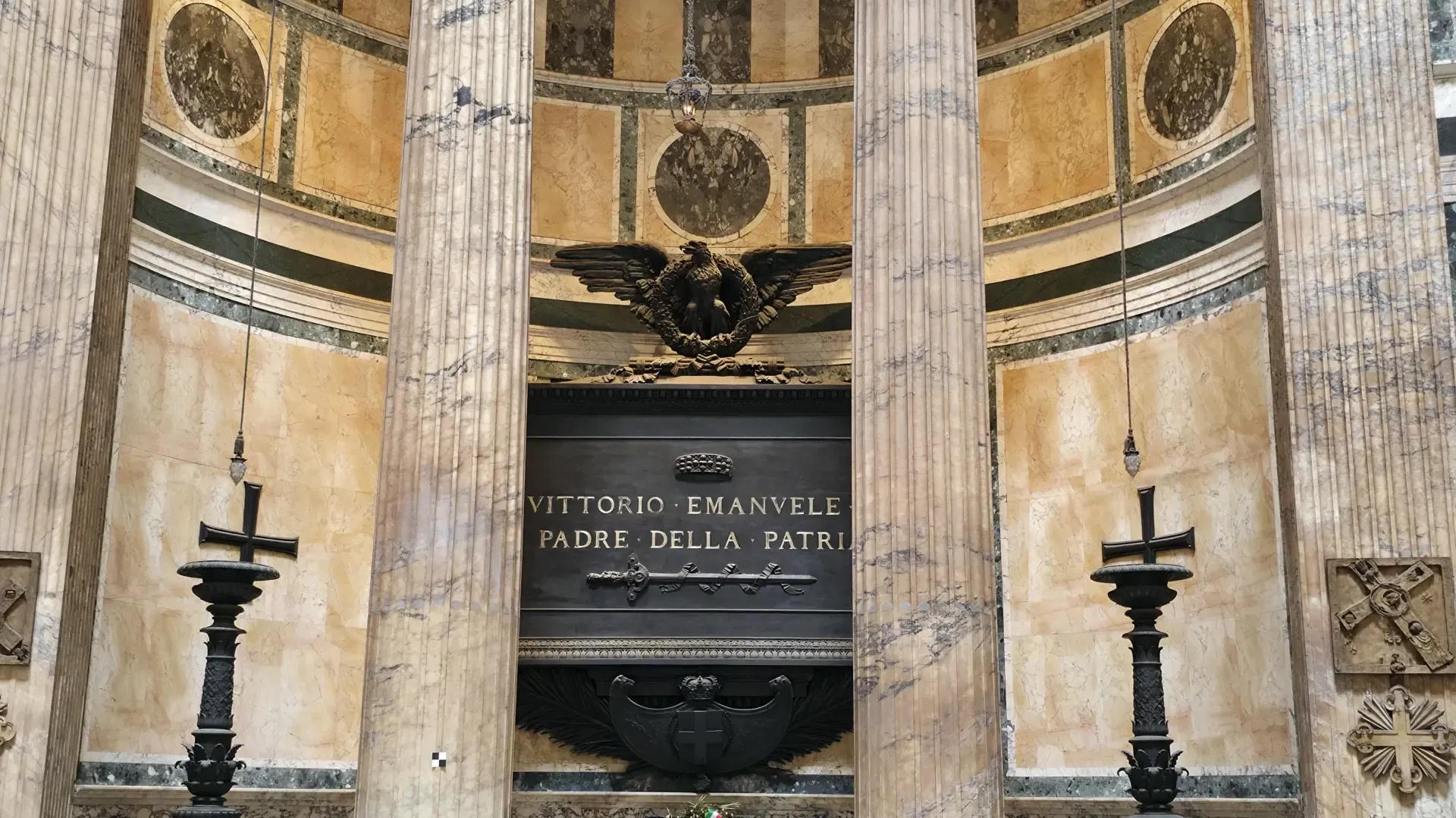
Queen Margherita, his wife and namesake of the beloved pizza (symbolizing the Italian flag: basil, mozzarella, tomato), is also entombed here, remembered fondly for her humanitarian work and symbolic role in Italian identity.
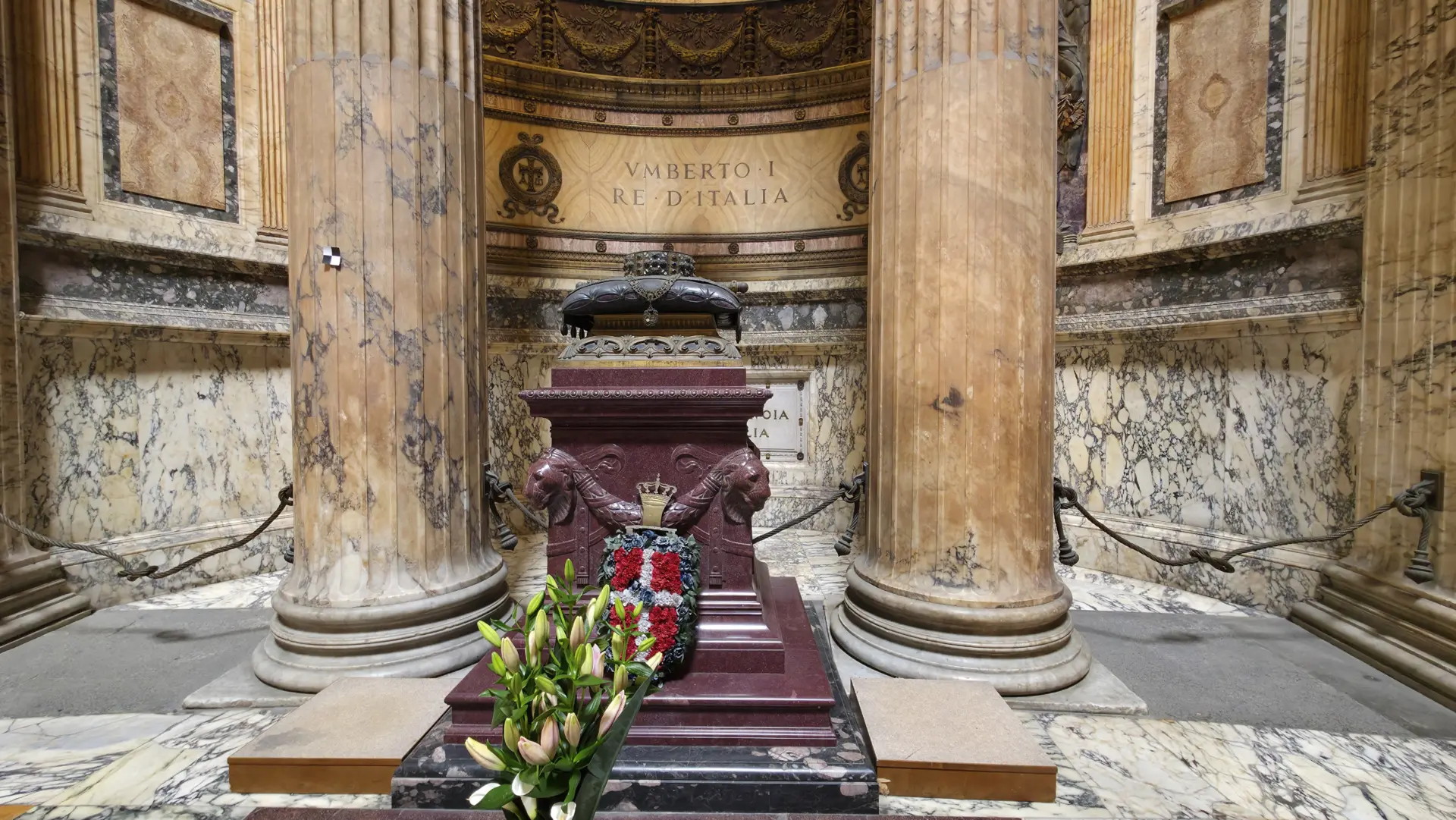
These tombs are more than stone, they are stories carved into the soul of Italy.
🔔 A Space for Stillness
Despite being one of the most visited landmarks in Rome, the Pantheon exudes a stillness that is almost sacred. The acoustics soften sound. The light moves slowly. Visitors naturally whisper. The chapels along the rotunda house altars, mosaics, and religious works added over centuries. Services are still held here, most memorably at Pentecost when the rose petals fall, and the air carries music, incense, and something deeply moving.
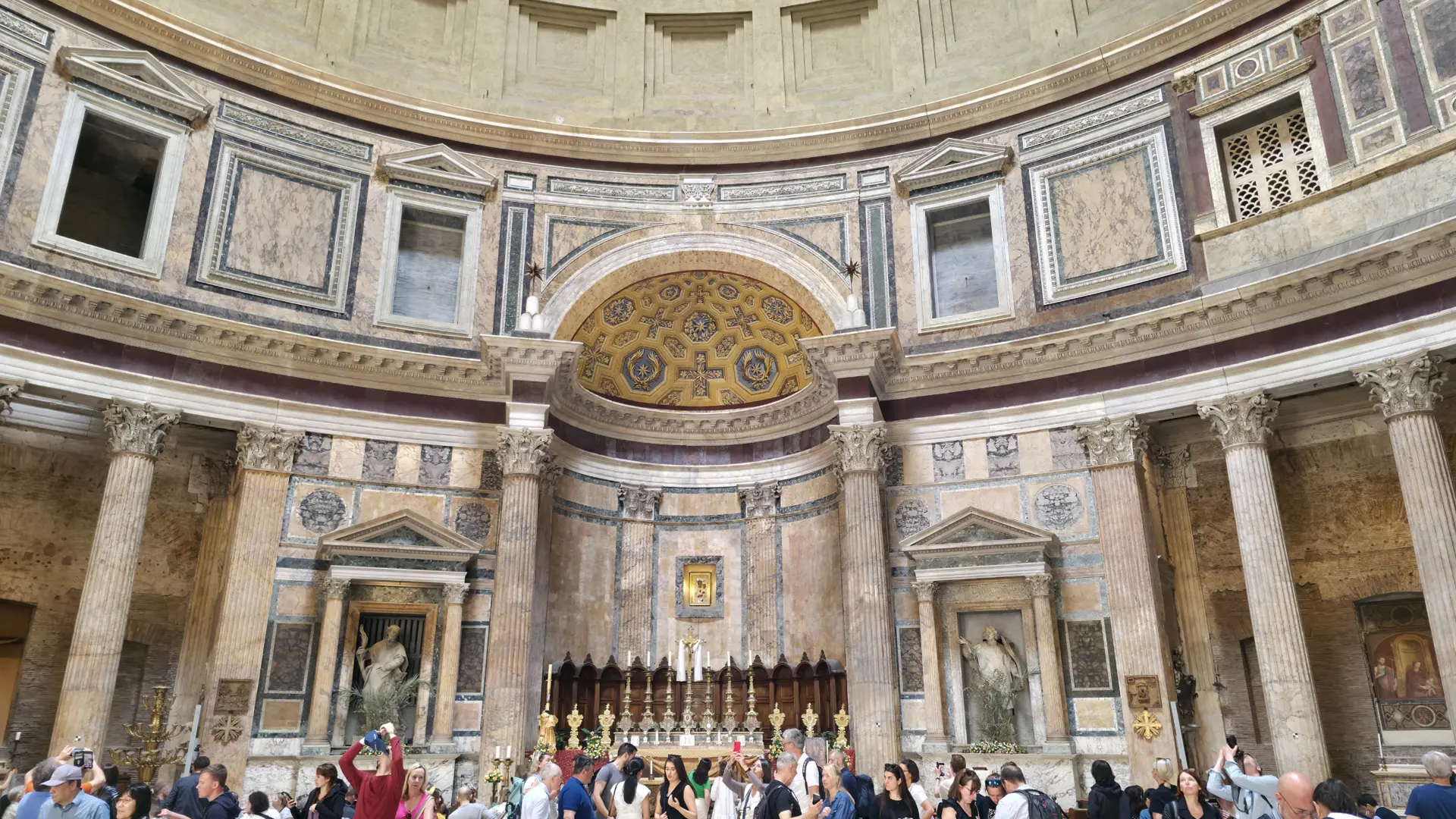
I sat quietly on a marble bench, just watching the light drift down from the oculus, shifting gently across the dome like a blessing. It was a rare moment of calm in a city so full of energy, and I soaked it in, gratefully.
Final Thoughts
The Pantheon is more than an architectural feat. It’s a living temple of time, one that bridges past and present, myth and memory, humanity and the divine.
If you find yourself in Rome, let your footsteps lead you to this ancient masterpiece. Enter slowly. Look up. Let the light, the silence, and the centuries speak to you.
Because beneath that dome, time doesn’t pass, it expands!
xoxo,
Bubbly 💖

